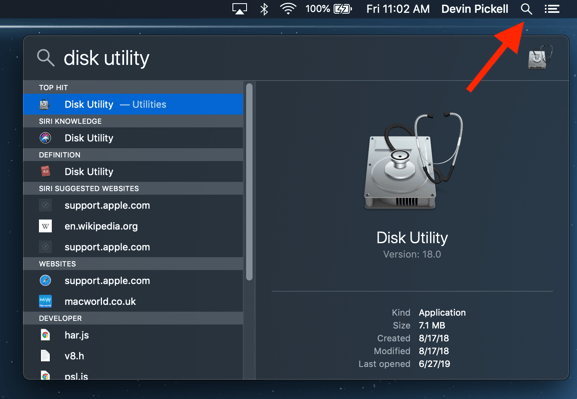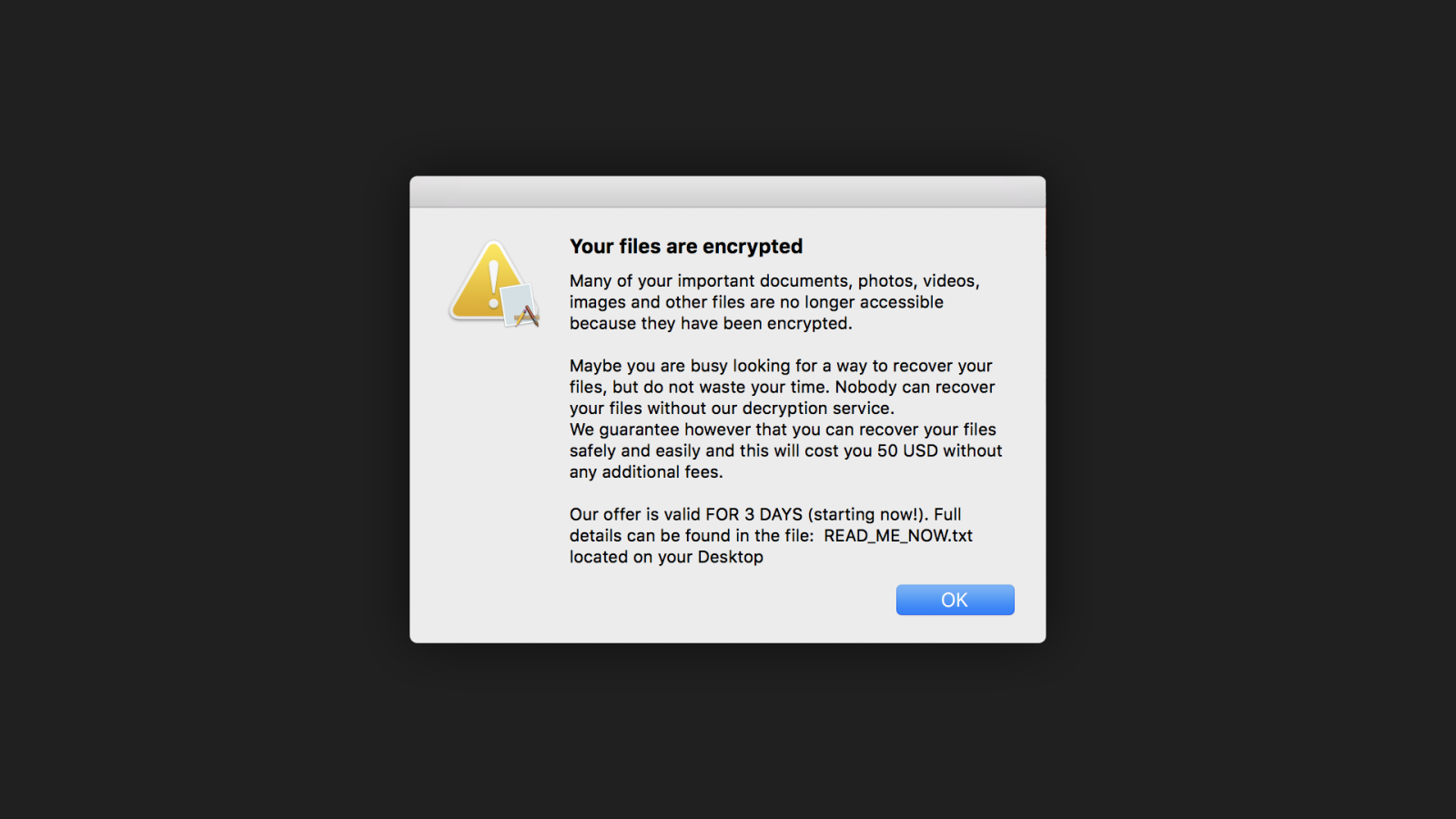Lots of users save confidential information on their Macs. Private data needs to be protected and secured to prevent unwanted access and identity theft. Fortunately, Mac users have lot of possible encryption options nowadays (built in Mac OS tools and 3rd party encryption apps as well).
How to Encrypt a Folder on Mac Using Disk Utility. Disk Utility can create an encrypted file known as a disk image. It is similar to a zip file, but it utilizes the strongest Mac encryption method. For example, this option is how I would add an encrypted folder to my Mac to keep an archive of past financial records. Also, protecting PDF files on Mac is pretty easy using the Preview application. However, currently, there are multiple Apps for encrypting files on macOS. But one of the easiest methods is using the Preview app which Apple recommends you use it. You can use a preview application on Mac to protect the most important PDF files more secure. A short tutorial on how to encrypt files on your mac. This encryption stops anyone from viewing your files without your password. Enjoy the video? How To Easily Encrypt Files On Mac. You can rest assured knowing that the data is encrypted. The process of encrypting files is easy, and I’ll to show you step.
Why Need to Encrypt Mac Files? All vital files stored inside a computer including Mac need to be.
Built Mac OS Disk Utility tool allows to protect your private files and create encrypted folder disk image. If user does not want to ecrypt the entire disk and enable filevault protection he/she may encrypt certain folder on the hard drive.
1. Open Disk Utility tool. In order to do this just click on Finder icon and select Go menu at the top. Choose Utilities from the drop down menu. In utilities folder look for Disk Utility icon (you can also press command + shift+ U and open Disk Utility in utilities folder).
2. Once you’ll open Disk Utility click on “File” menu at the top. Choose “New ” and select “Image from folder”
3. Select the folder you want to encrypt(in my case it is thunderzzz secret folder ) or create the new folder and add data containing confidential info there. Click on “Image”.
4. Type the name for encrypted disk image(in my case I call it “Encrypted disk image”) and select 128 or 256-bit encryption option. Click on “Save”.
5. Set up the password for encrypted image. Note: Save this password somewhere or write it down. In case you forget it you loose the access to all encrypted files inside the folder. This is probably the only drawback of this encryption option.
Next time you open this image double click on it. You’ll be prompted to type the password. Your files inside this disk image are protected.
There is also vast choice of third party encryption tools on the market. I have tested some of them on random basis.

Encryption Buddy
This tiny app allows user to protect and encrypt any type of files. Drag and drop the files you want to encrypt or protect with password to the application window. Create a password and click “Encrypt My Files”. It takes some time. In order to decrypt this file you should do almost the same. Easy as a pie. This app is available on the AppStore. You may find more info on developer’s website: http://gotoes.org/sales/Encryption_Buddy/index.php
MacFort
Encrypts and protects with password files, folders, applications and their associated files. It uses AES 128 or 256 bit encryption standard (you may use the same via Disk Utility ) There is no way to see encrypted files without MacFort app. If Mac is lost o stolen your private files remain protected. More info here:

MacKeeper
Despite the controversial reputation of this application on this forum, I have decided to test their built-in encryptor option and it worked pretty well for me. “Data Encryptor” makes encrypted files invisible. It enables two level security mechanism. Internal password to Data Encryptor itself and the password to the encrypted item. More info here: http://manual.mackeeper.com/features/data-encryptor/
CryptMe
The simplest text editor/viewer. Open the text editor. Paste or type sensitive info there. Click on the lock and the data is encrypted. Application uses the same 256 bit AES encryption standard. Application is compaible with Mac OS and iOS as well. Available on the App Store. More info here: https://itunes.apple.com/us/app/cryptme/id445265455?mt=12
Encrypto
Encrypting Files On Macbook
Cross platform application for Windows and Mac computers. Allows to share encrypted files with friends and send them via e-mail. You can also encrypt the file and and set up the hint. Hint is useful in case you forget the password. More info here: https://itunes.apple.com/us/app/encrypto-encrypt-files-you/id935235287?mt=12
It is up to you to decide whether use 3rd party encryption apps or perfect Disk Utility. In my opinion, Disk Utility is all you need. 3rd party apps are good for novice users, however they use the same AES 256-bit standard available via Disk Utility. You should set up the strong and easy to remember password. Good option is to write down password hints somewhere. Remember: In case you forget the password, you no longer have the access to the items inside the encrypted folder.
Are your files automatically getting encrypted when stored on your Windows 10 computer? This post explains in detail how to remove encryption in Windows 10, 8, or 7. And you can learn how to decrypt a file and change encrypted files to normal files, like unencrypt PDF and Excel. Besides, you can use a professional virus attack data recovery tool to recover ransomware encrypted files.
Quick Navigation for Solutions to Remove File Encryption:
| Workable Solutions | Step-by-step Troubleshooting |
|---|---|
| Remove Encrypt Contents | Right-click encrypted file/folder > 'Properties' > 'Advanced” > 'Encrypt Contents to Secure Data'...Full steps |
| Remove Encryption from PDF | Open encrypted PDF in Adobe Acrobat > 'Advanced' > 'Security' > 'Remove Security'...Full steps |
| Remove Encryption from Excel | Open encrypted Excel > 'Review' > 'Unprotected Sheet' > Enter password...Full steps |
| Restore Ransomware Encrypted File | Launch EaseUS file recovery software > Scan device > Restore lost files deleted by ransomware...Full steps |
How to Decrypt a File
'My files located on the desktop are automatically getting encrypted after moving to any other locations, and the color of the file name changes to green. By clicking the file Property, in the Advanced Settings, the option Encrypt contents to secure data is automatically checked without asking my permission. How to remove encryption in Windows and how to decrypt a file?'
Encrypt Files Mac Yosemite
Overview of File Encryption
Windows Encrypting File System (EFS) is one of the basic file/folder encryption technology that enables files to be transparently encrypted to protect confidential data from attackers with physical access to the computer. When files are encrypted in this way, the file name will show green color instead of the normal black text. Except for EFS, Windows comes with another encryption feature, named BitLocker, also can guard important data by encoding logical drives.
Once you enable encryption function for your drives, new or existing files, and folders will be automatically encrypted on the drive with a certificate and private key. If you copy unencrypted files to a folder with encrypted property, they will also be automatically encrypted. This makes it impossible for unauthorized users to access and edit the data.
How to Remove Encrypt Contents to Secure Data
You can remove file system encryption by unchecking the 'Encrypt Contents to Secure Data' feature. Yes, this only works for the file system, not for a specific file. If you want to decrypt files, the certificate or password is indispensable. To recover encrypted files without password, check the topic article.

1. Find the file or folder you wish to encrypt.
2. Right-click the file/folder and click 'Properties.' Then, click the 'Advanced...' button on the General screen.
3. Check the box 'Encrypt Contents to Secure Data' under the Compress or Encrypt attributes section, then click the 'OK' button.
4. Continuing clicking the 'OK' button. An encryption warning box will pop up.
5. Check the 'Encrypt the File Only' box to encrypt the individual file, then click 'OK' to finish.
How to Decrypt a File in Windows 10/8/7
Read this part and see how to decrypt PDF and Excel files. If your encrypted files are lost, you can recover deleted data first, and use the ways below to decode.
How to Remove Encryption from a PDF File
PDF is one of the most reliable file formats used by the users to present and exchange documents. Nowadays, security is the main concern for all the users, so many users choose to encrypt there PDF documents applying passwords to them. However, when others need to read the PDF, you need to remove the encryption. Follow the following steps to decrypt a PDF file in Adobe Acrobat. And the premise is you must know the password.
1. Open Adobe Acrobat on your computer.
2. Open the protected PDF file and type the password when prompted.
3. Click 'Advanced' at the top of the Acrobat window. Select 'Security' and then click 'Remove Security.'
4. Click 'OK' to confirm the action and remove the encryption. Then, press 'Ctrl+S' to save the unencrypted PDF file.
How to Remove Encryption from Excel
Remove the encryption from Excel worksheet and Excel document is different. Check the way respectively.
Decrypt an Excel Worksheet
Encrypt Files Mac Terminal
1. Click the 'Review' tab on the too bar. Then, choose 'Unprotect Sheet'. You will be prompted for a password.
2. Enter the password and click 'OK'. Now, you have removed the password from an Excel worksheet, and you can start editing.
Unencrypt an Excel Document
1. Open the Excel document you want to remove encryption.
2. Click 'File' > 'Info' > 'Protect Workbook.' In the drop-down menu, click 'Encrypt with Password'. The password entry box arises.
3. Delete the password in the box, leaving the box empty. Click 'OK' to remove the password from the document. Then, click 'Save' before exiting the document.
How to Remove Encryption from Ransomware Infected Files
In addition to actively encrypting your files, your files can also be encrypted permissively by a ransomware virus. In this case, we suggest that you don't pay the ransom and use a data recovery software to recover the deleted original files by ransomware. In this way, you can remove the encryption.
You need to understand that most of the computer virus encrypts files in three steps, like the screenshot below. First, make an entire copy of all the files; second, delete all original files; third, encrypt the copy. That's why you see encrypted files as soon as your computer were virus-infected.
To recover ransomware encrypted files, you can use EaseUS Data Recovery Wizard. This powerful file recovery software allows you to recover data from virus attack, accidental deletion, hard drive formatting, partition loss, recycle bin emptying, and more.
Step 1. Launch EaseUS Data Recovery Wizard. Select the disk partition or storage device where you lost files and click the 'Scan' button.
Step 2. This program will quickly start a scanning process to find lost files. When the process accomplishes, you can double-click files to have a preview before selection.
Encrypt A Folder Mac
Step 3. Choose the files you want. Then click the 'Recover' button to get them back. You should save the data to another safe spot in your PC/storage device, not where they lost.
Encrypt File Mac Command Line
After data recovery, continue taking time to remove the virus with antivirus software to make sure your computer is clean. We highly suggest that you back up your important files regularly to avoid unexpected data loss. You can do it manually or automatically by using a Windows schedule backup software.